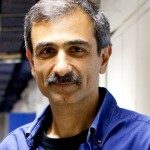Link to Pubmed [PMID] – 12798290
Dev. Biol. 2003 Jun;258(2):307-18
Gene targeting has indicated that Myf5 and MyoD are required for myogenic determination because skeletal myoblasts and myofibers are missing in mouse embryos lacking both Myf5 and MyoD. To investigate the fate of Myf5:MyoD-deficient myogenic precursor cells during embryogenesis, we examined the sites of epaxial, hypaxial, and cephalic myogenesis at different developmental stages. In newborn mice, excessive amounts of adipose tissue were found in the place of muscles whose progenitor cells have undergone long-range migrations as mesenchymal cells. Analysis of the expression pattern of Myogenin-lacZ transgene and muscle proteins revealed that myogenic precursor cells were not able to acquire a myogenic fate in the trunk (myotome) nor at sites of MyoD induction in the limb buds. Importantly, the Myf5-dependent precursors, as defined by Myf5(nlacZ)-expression, deficient for both Myf5 and MyoD, were observed early in development to assume nonmuscle fates (e.g., cartilage) and, later in development, to extensively proliferate without cell death. Their fate appeared to significantly differ from the fate of MyoD-dependent precursors, as defined by 258/-2.5lacZ-expression (-20 kb enhancer of MyoD), of which a significant proportion failed to proliferate and underwent apoptosis. Taken together, these data strongly suggest that Myf5 and MyoD regulatory elements respond differentially in different compartments.

